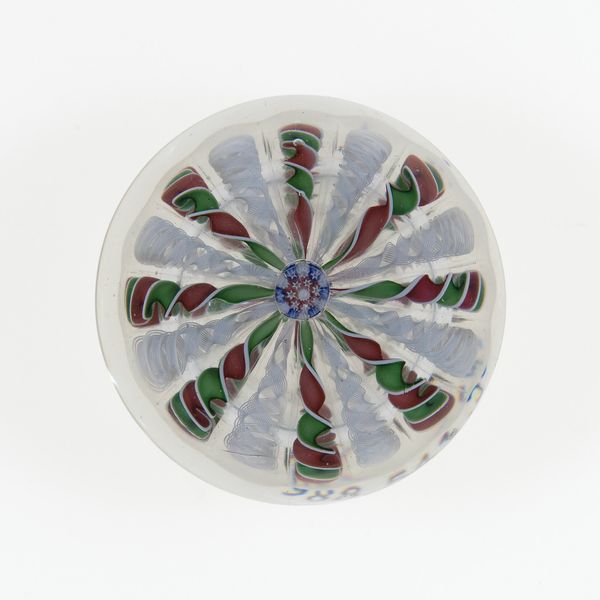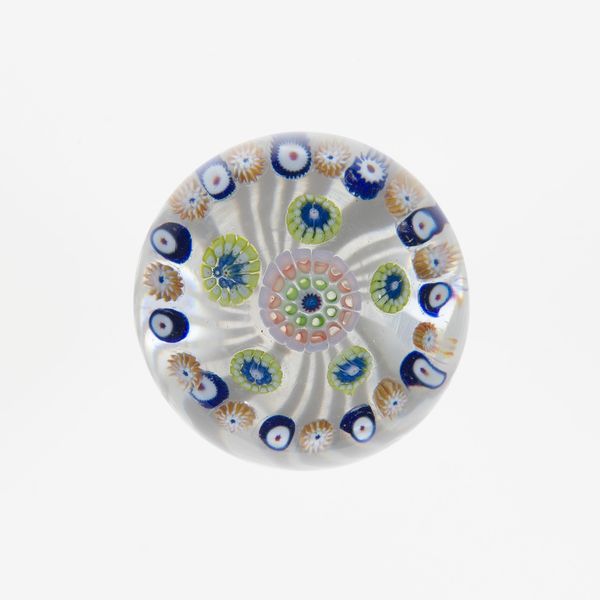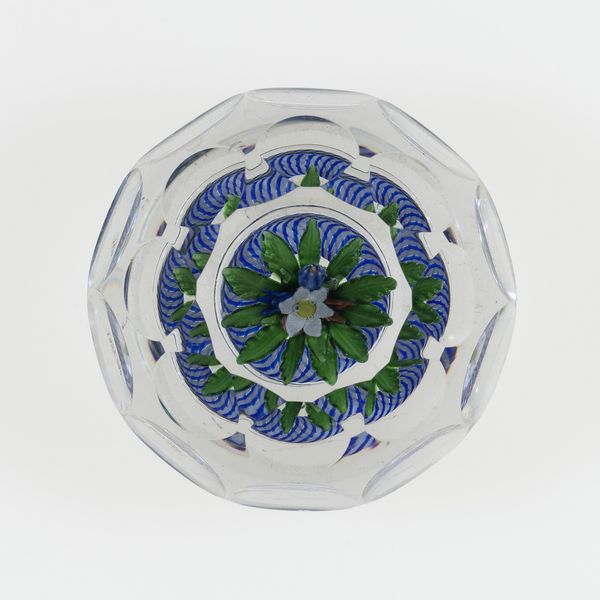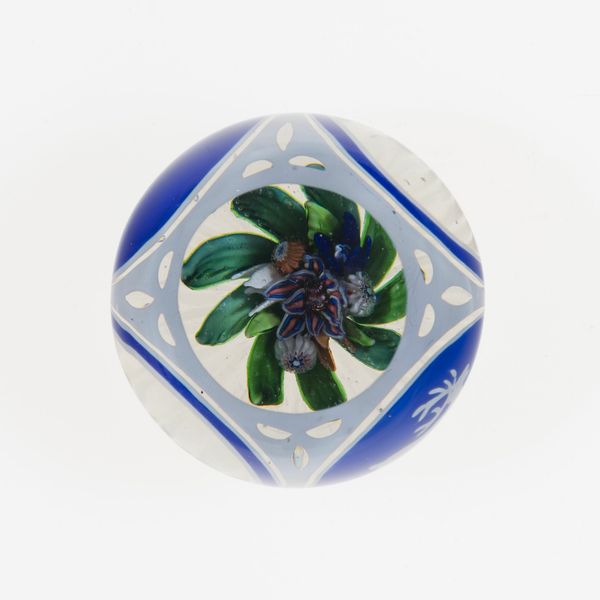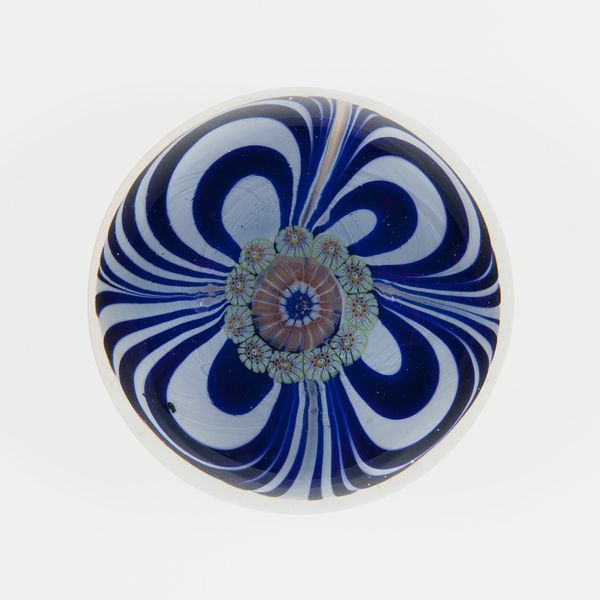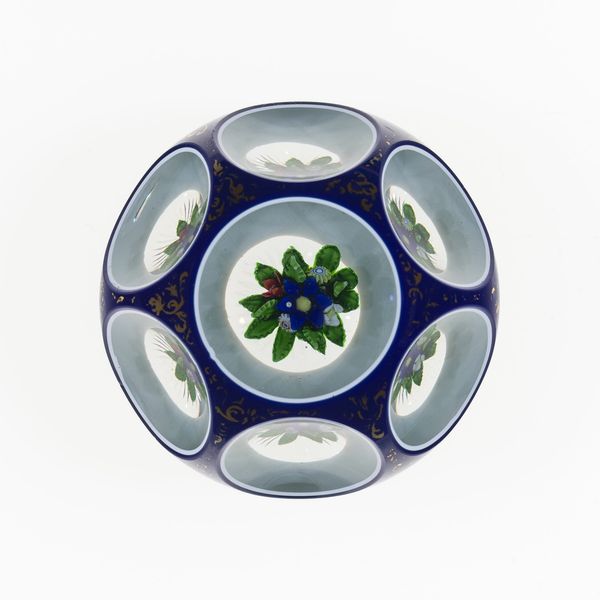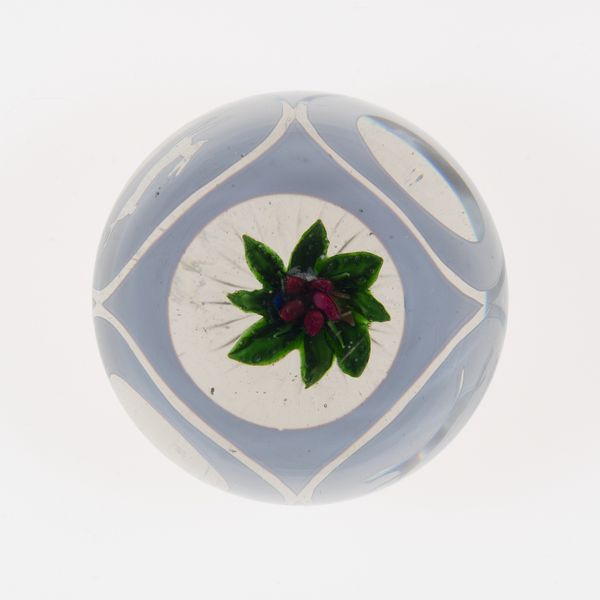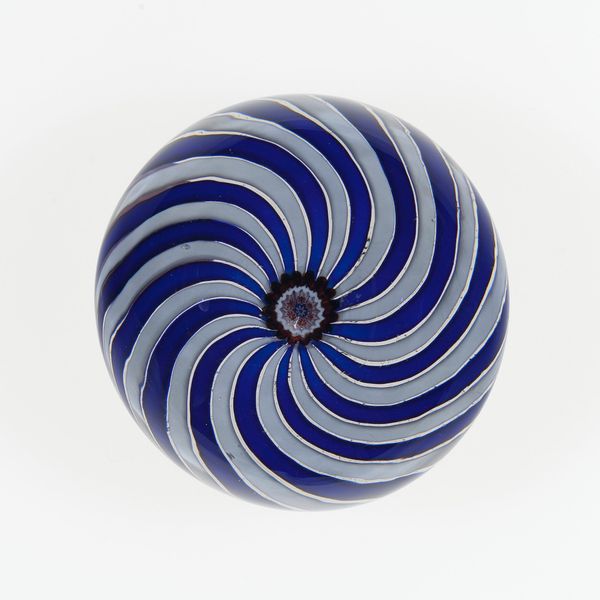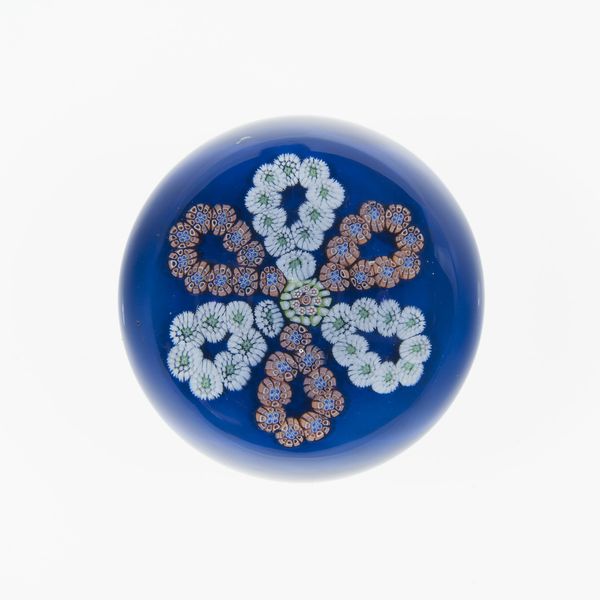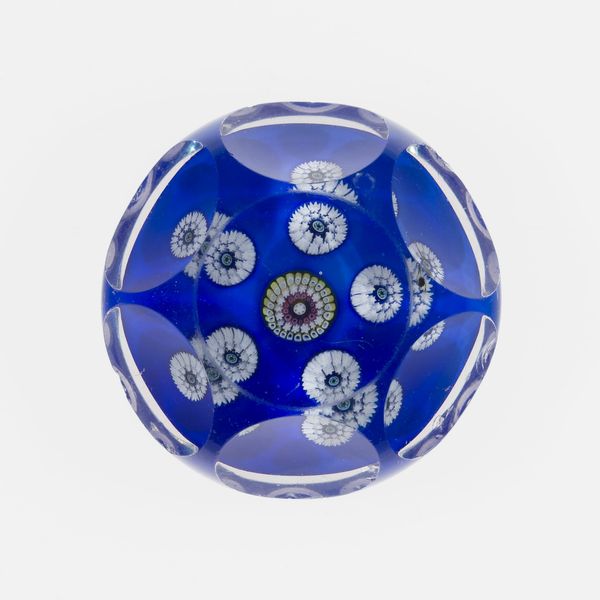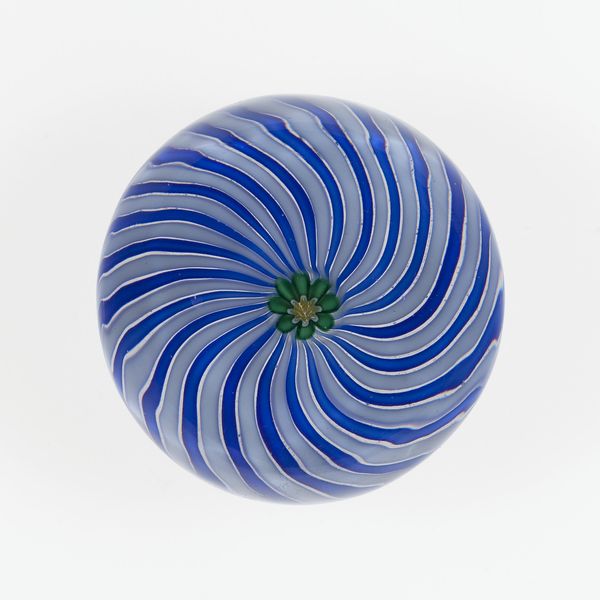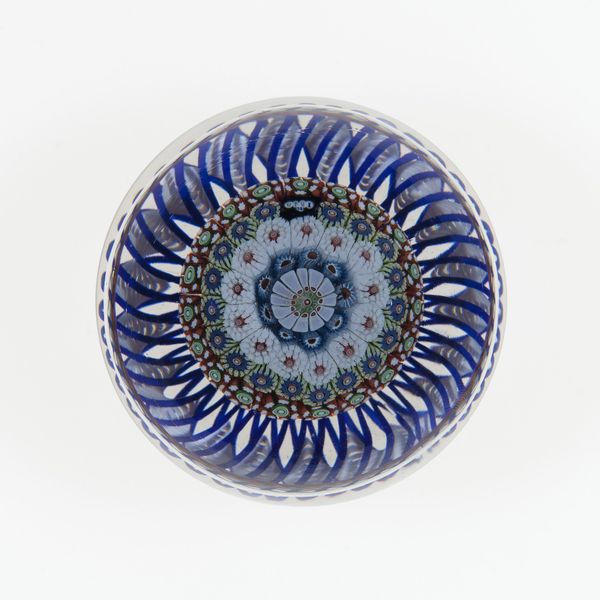
glass
#
glass
#
geometric
#
decorative-art
Dimensions: Diam. 7.3 cm (2 7/8 in.)
Copyright: Public Domain
Curator: Gazing at this glass paperweight is quite mesmerizing. The Boston and Sandwich Glass Company likely produced this example sometime between 1850 and 1900. Editor: It’s striking! A little world encased in glass. I find it so... innocent, almost naive in its artlessness. Yet, that precisely suggests deeper Victorian social currents, perhaps? Curator: Indeed. What we're observing is glasswork marketed towards the burgeoning middle class during the height of industrial production. Glass production itself, the repetitive nature of its assembly… the sheer labor is quite pertinent. Editor: Absolutely. This piece speaks to Victorian ideals of domesticity. The contained flower almost presents a manicured version of nature. Was the idealization a response against anxieties related to environmental and societal changes tied to industrialization, perhaps? Curator: A good question. These paperweights utilized techniques such as lampworking, involving intense heat, careful hand movements. Artisans meticulously formed glass rods into flowers, leaves… embedding them inside the glass sphere. The exterior decoration further exemplifies industrial repetition in glass production. Editor: The single blossom frozen in concentric blue circles definitely lends itself to thinking about identity. A static floral image as a feminine object of both adornment and control speaks to the restrictive societal role relegated to women in the Victorian era. I think we might read the entrapment of nature alongside it. Curator: Right. The factory conditions for the workers were arduous. The raw materials of the glass would also play into the cost and consumption cycles of such luxury items for the growing bourgeois consumer culture. This complicates notions of "art." Is it fine art, craft, or product? Editor: Looking at this flower now, I consider that perhaps we're also meant to consider what isn't here. Its containment might prompt discussion about unfulfilled desires and aspirations denied in rigid social and gendered conventions, framed against environmental manipulation. Curator: Agreed. Even now, examining it through this lens, you bring attention to details of the craftsmanship, not as purely aesthetic choices, but in their sociopolitical implications. Editor: And you prompt me to look at materiality, to really trace back to glass-making process—all the invisible hands and physical elements that converged. So crucial to remember!
Comments
No comments
Be the first to comment and join the conversation on the ultimate creative platform.
